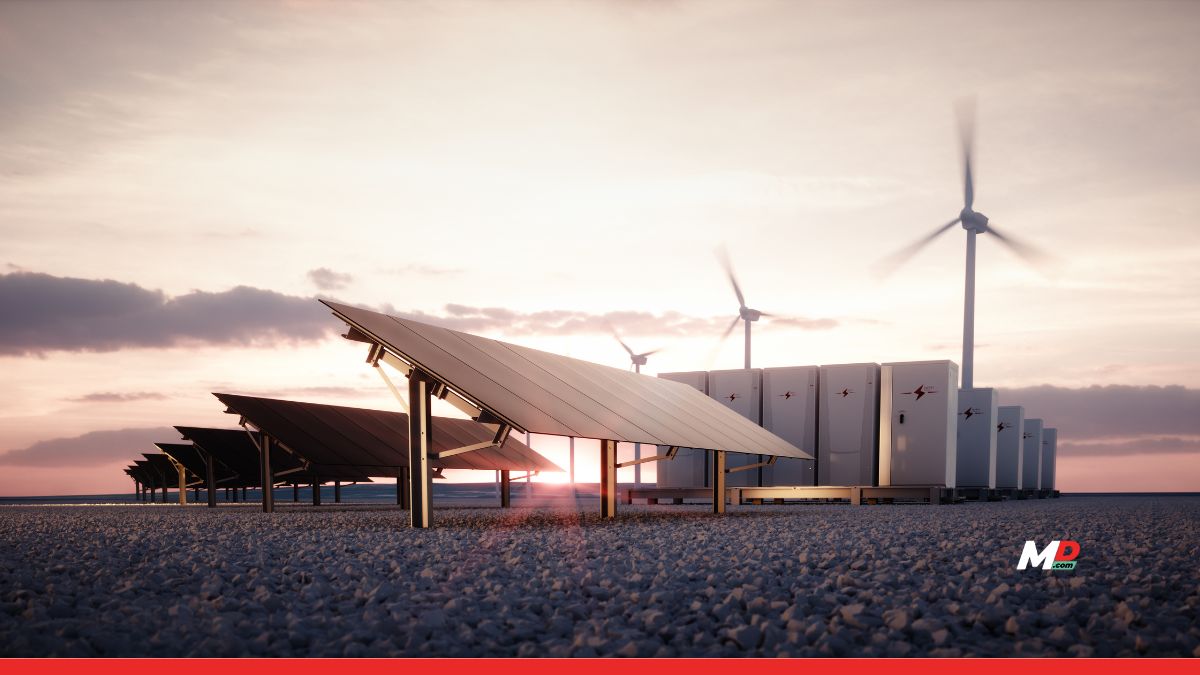Published
8 months agoon

India’s Renewable Energy Revolution Builds Momentum Despite Challenges
India’s renewable energy sector is experiencing unprecedented growth as the nation races to meet its ambitious clean energy targets. With a record 59 gigawatts (GW) of clean power auctions in 2024—representing a remarkable 2.3-fold increase from the previous year—India is demonstrating serious commitment to transforming its energy landscape. This surge in activity aligns with the government’s goal of auctioning at least 50GW annually, signaling strong intent to accelerate the transition away from fossil fuels.
Market Maturation and Grid Stability Innovations
The market is showing clear signs of maturation, particularly in its focus on grid stability and reliability. Hybrid auctions, which strategically combine wind and solar technologies, now account for over half of all complex auction volumes. This shift toward integrated energy solutions represents a sophisticated approach to renewable deployment, allowing for more consistent power generation throughout the day and night cycles while maximizing infrastructure utilization.
Furthermore, the commercial and industrial (C&I) segment is increasingly embracing green energy, with open access installations reaching record levels. By the end of fiscal year 2024, cumulative open access capacity had reached 18.7GW, with annual installed capacity in the C&I segment growing by an impressive 90.4% year-on-year. This trend underscores the growing appetite for clean energy solutions among businesses seeking both sustainability and cost benefits.
However, the sector faces a significant execution gap.
The Installation Gap: Targets vs. Reality
Despite the robust auction pipeline, actual installations have progressed at a sluggish pace. The installed renewable energy capacity stood at 209GW by December 2024, reflecting just a 16% year-on-year increase. This rate of growth, while respectable, falls short of what’s needed to achieve India’s 2030 target of 500GW of non-fossil fuel capacity.
Transmission Sector Growth: Building the Backbone
The transmission sector is making strides to keep pace with renewable growth. Transmission project auctions more than doubled in value by December 2024, reaching US$12.6 billion. According to the National Electricity Plan, India aims to add interstate transmission capacity worth approximately US$76.9 billion and intrastate capacity worth about US$29.1 billion between 2022 and 2032. This massive infrastructure expansion is critical for evacuating and distributing renewable power across the country.
Financing Trends: Capital Flows, But Policy Hurdles Remain
Capital flow into the sector remains strong, with major financing deals highlighting investor confidence. Tata Power secured US$4.25 billion from the Asian Development Bank, while Power Grid Corporation of India Limited received a US$200 million green loan from Sumitomo Mitsui Banking Corporation. Investment in the renewable sector during the quarter ending December 2024 totaled over US$4.66 billion, marking a 91.5% year-on-year increase.
Despite these positive financing trends, policy-related bottlenecks persist. One critical issue is the growing delay in signing Power Sale Agreements (PSAs), with over 40GW of renewable capacity currently in limbo due to unsigned agreements. This impasse threatens to undermine investor confidence and jeopardize India’s 2030 renewable energy goals.
Also read: Bhutan-India Energy Roundtable: IREDA CMD pushes innovative financing
Corporate Champions: Driving the Renewable Revolution
Waaree Renewable Technologies: Profits Surge
Indian companies are making significant contributions to this renewable revolution. Waaree Renewable Technologies posted impressive results in the latest quarter, with profits soaring 83% year-on-year to ₹93.8 crore. The company’s Engineering, Procurement, and Construction business showed particularly strong performance, with revenue climbing 76% to ₹469.72 crore. Despite a recent stock correction of over 52% from its peak, April brought signs of recovery with a 27% gain, building on a 10% rise in March.
Suzlon Energy: Expanding Wind Power Footprint
Suzlon Energy continues to expand its footprint in the wind energy sector, recently securing a 100.8 MW order from Sunsure Energy—enough to power approximately 80,000 homes annually. The project in Jath, Maharashtra will feature 48 S120 wind turbine generators, each with a 2.1 MW capacity, mounted on Hybrid Lattice Towers for greater efficiency. This marks Sunsure’s entry into wind energy, with Suzlon managing the entire execution from installation to commissioning.
BHEL: Pioneering Green Hydrogen Solutions
Meanwhile, BHEL is betting on green hydrogen, having signed a strategic agreement with the Bhabha Atomic Research Centre (BARC) to utilize indigenous technology for manufacturing electrolysers—critical components for green hydrogen production. The partnership focuses on a new Indian-made Mixed-Matrix Membrane Diaphragm technology, which could significantly reduce carbon emissions by replacing fossil fuels in heavy industries like steel manufacturing and transportation.
Bridging Intent and Implementation
For India to maintain momentum in its renewable energy journey, policymakers must address the gap between intent and implementation. This means not only continuing to auction capacity but also setting annual targets for PSA signing to ensure projects move from planning to execution more efficiently. Additionally, right-of-way issues during transmission line expansion must be cleared on priority, and the envisaged transmission capacity growth under the National Electricity Plan must be realized to prevent bottlenecks.
As India progresses toward its 2030 clean energy targets, the successful coordination of policy, financing, and implementation will determine whether the country can transform its impressive auction pipeline into actual renewable capacity on the ground. With continued focus on these elements, India’s renewable energy revolution has the potential to reshape the nation’s energy landscape and make a significant contribution to global climate goals.


India’s Growth Engines Awarded: Most Preferred Workplaces 2025 Set New People-Centric Benchmarks


India’s Growth Engines Awarded: Most Preferred Workplaces 2025 Set New People-Centric Benchmarks


CBI books Anil Ambani’s son, RHFL in ₹228 Crore bank fraud case


Quick-Commerce Heading for Shakeout as Funding Model Fails, Warns Blinkit CEO


Venkatesh Iyer never looked at us during trials and I thought he was someone with a lot of attitude : Abhishek Nayar


Welspun One expands footprint with 46-acre Talegaon MIDC project; unveils ~INR 550 crore plan for a next-generation logistics park

